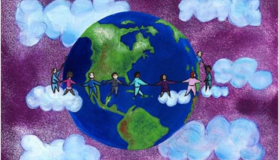Kluckhohn and Strodtbeck's value orientation (textbook p. 222-227)
Kluckhohn and Strodtbeck's list five problems for which all cultures must find solutions.The problems are as follows:
(1) What is the inborn character of human nature?
(2) What is the relationship between people and nature?
(3) What is the focus of human life with respect to time?
(4) What is the focus of human activity?
(5) What is the relationship of one person the another?
The solutions available are as follows:
Human nature | Basically good | Mixture of good and evil | Basically evil |
Person-nature orientation | Mastery over-nature | Harmony with nature | Subjugation to nature |
Time orientation | Past | Present | Future |
Activity orientation | Value doing | Value being | Value being-in-becoming |
Relational orientation | Individualism | Lineality | Collaterality/collectivism |
Note: While one solution tends to be preferred by members of any given culture, all potential solutions are present in every culture.


